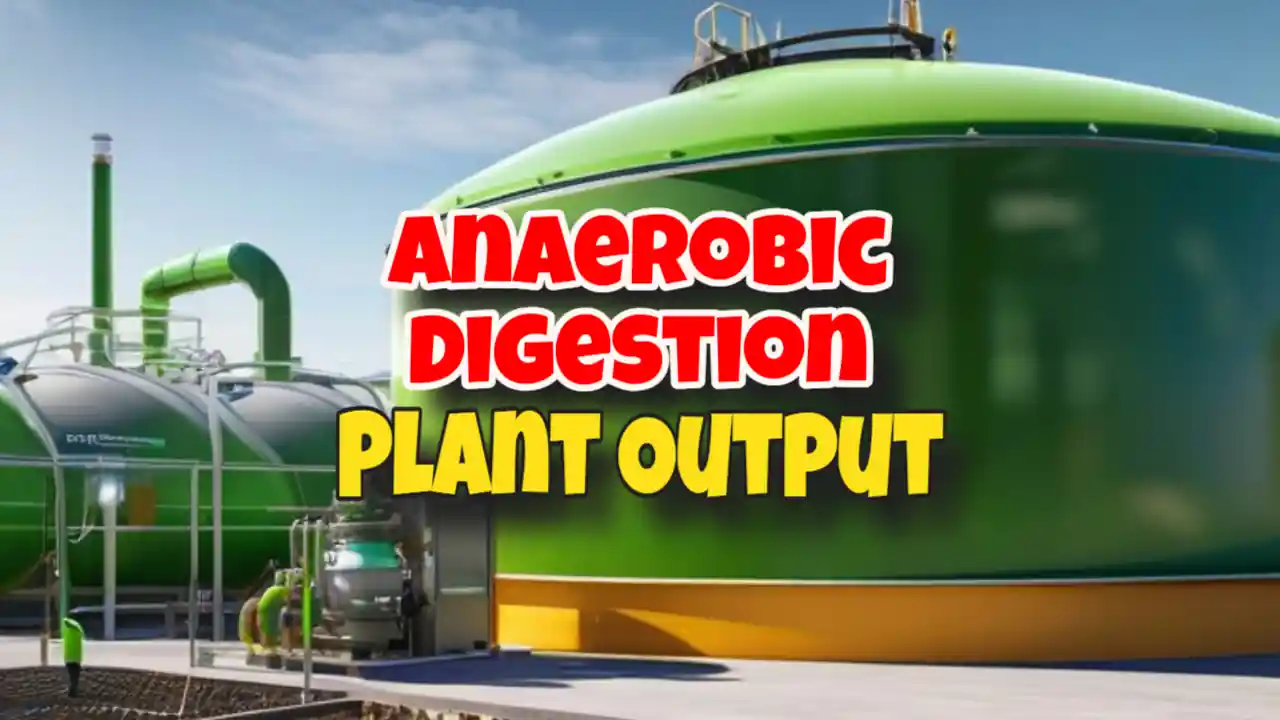Production from Anaerobic Digestion Plants: Maximizing Plant Yield Output
Discover how to optimize production from anaerobic digestion plants and increase plant yield output. Learn about the output of anaerobic digestion facility and more.
Factors Affecting Plant Yield Output
Several factors can influence the yield output of anaerobic digestion plants, including the types of feedstock used, temperature and pH levels, and mixing and agitation techniques. By optimizing these factors, plant operators can maximize production and efficiency.
How to Optimize Production
To optimize production from anaerobic digestion plants, it is important to maintain equipment, monitor and adjust process parameters, and implement efficient waste management practices. By following these strategies, plant operators can increase plant yield output and overall performance.
Common Challenges in Anaerobic Digestion Plants
Foaming issues, inhibition of microbial activity, and odor control are common challenges faced by anaerobic digestion plants. Addressing these challenges requires proactive management practices and continuous improvement efforts to ensure smooth operation and optimal performance.
Case Studies
Success stories of anaerobic digestion plants showcase the potential for maximizing plant yield output and achieving sustainable waste management solutions. By learning from these case studies, plant operators can implement effective strategies to improve their own facilities.

Just how much output of #biogas and energy from biogas can be achieved, is an often asked and crucially important question, when planning a biogas project. Most feasibility studies conducted for biogas plants are based upon an assumption that the cost of disposal of the resulting digestate will be neutral. That being the case there will be only two sources of income.
The first will be the gate fee and that will be assessed by researching for each project by talking to council waste disposal officers, and business managers within those companies who have organic waste they wish to dispose of locally.
The second and the only one that we can discuss in general terms here, is the output of biogas, and how much revenue that can produce is therefore essential question. In many cases, it will be the only income source of that his controllable by the plant management, as they will be able to choose whether to sell the raw biogas, or process it further into the product commanding a higher price. What the biogas plant opertor can get in payment per cubic metre for the raw gas can only be assessed by finding a local buyer and negotiating a price.
The mount of biogas any particular biowaste will produce varies greatly depending upon the technology used, however, it is most common for gas production rates to be in the range of 70 to 120 cubic metres per tonne. Furthermore, biogas contains something like 55 percent methane. It is solely the methane present that contributes to the energy value. At 55 per cent methane content the energy content of the raw biogas is approximately 21 MJ/m3.
Before that can be calculated as a net output of biogas energy that can be sold, it is necessary to deduct the sacrificial loads which will be used to run the biogas plant itself. As a rule of thumb between 20% and 1/3rd of the energy the plant generates will be required to power the process itself.
For example, if a plant was to process 20,000 tonnes per annum of biowaste, it would be able to export to something like 400 kW of electricity and in addition 750 kW of heat created in producing the electricity. The feasibility of using the heat produced by the gas engine when generating the electrical power varies greatly. Often, there is no readily available user for the heat, in which case a standard air-cooling radiator system is normally installed. However, with suitable investment a CHP system in which hot water is piped, for example, into a number of small businesses to provide heating nearby, the waste heat can be sold very profitably. Of course, by adding CHP the overall carbon footprint of the AD plant rises further, and this can be an advantage for the owning company if it wishes to show off its “green” credentials.
Alternatively it has been suggested that the gas might be processed to produce diesel fuel, in which case it would provide 1.4 million litres of diesel fuel each year.
If the compost was also to be sold it would provide an income. The quantity of compost produced again varies greatly, but a rule of thumb used here would be to assume that 40 to 70 percent of the feedstock input will become compost (fibre). After further aerobic windrowing of the compost from #anaerobic digestion, and (screening) sieving, can be solved into any local market which exists for selling aerobic compost. therefore, assessing the local market for anaerobic compost will provide a guide as to the saleability and value of the fibrous output from a biogas digester.
Contaminants and unwanted materials are removed from the feedstock at the start and during screening of final compost. These are usually called “rejects”, and as the disposal will cost the biogas plant operator it is necessary to quantify the amount of this material, which will probably have to be sent to a landfill. It is hard to generalise the proportion of the compost which will arise as reject material. All that can be said that the reject material typically comprises between 1 and 10 percent by weight of the total compost produced.
The quantity of liquid digestate, not including additional liquid added if needed to improve pump-ability, and not including any additional liquid added to avoid excessive nitrogen/ammonia present within the digester, will be as a “rule of thumb”, between 10 and 30 percent by mass, of the input waste feedstock tonnage.
The liquid digestate created by the digestion of waste materials which include MSW food, is by default deemed not suitable for use as a fertiliser of any crops in te UK. As a consequence, while this remains the situation in the UK it is almost impossible to sell it. However, it is known that the UK government department Defra, appreciates that this is a problem and is endeavouring to change the regulations about this.
Until alternative methods of using the liquor from MSW, such as to fertlize hydroponic systems, use it in aquaculture, or simply concentrate it and further purified it as fertilizer-crystals, it will need to be further treated before being discharged to the sewer. A formal discharge consent is of course needed in order to do that.
(Source of all figures provided: Biological techniques in solid Waste management and land remediation; Chartered Institution of Wastes Management, 2009, CIWM Business Services Limited, Northampton, UK, WWW.CIWM.CO.UK)
Anaerobic Digestion Output a Conclusion
Maximizing plant yield output in anaerobic digestion plants is essential for achieving sustainable energy production and waste management. By optimizing process parameters, addressing common challenges, and learning from successful case studies, plant operators can enhance the performance and efficiency of their facilities.





Leave a Reply